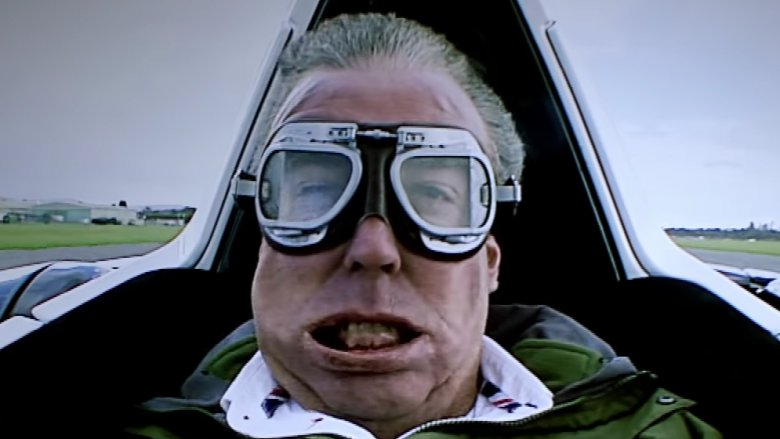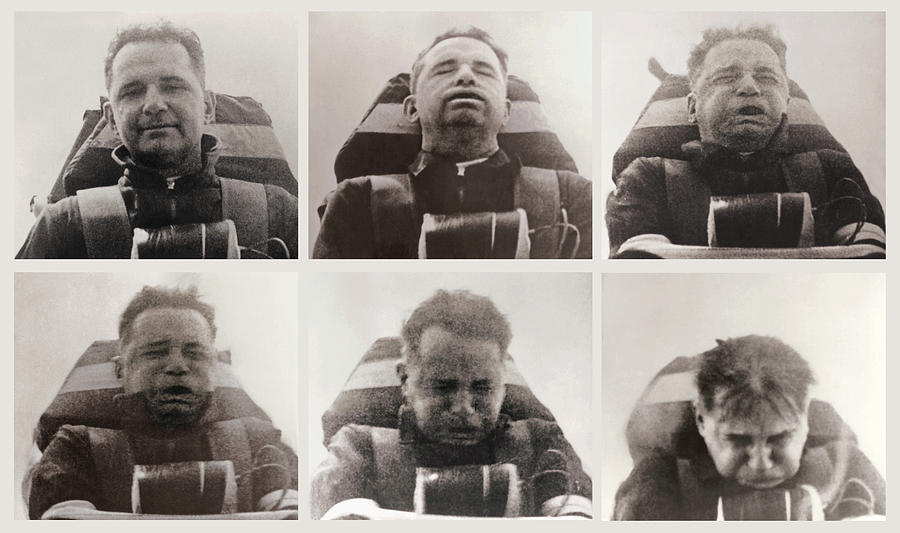

The SR-71’s inlet configuration was automatically adjusted during supersonic flight to decelerate air flow in the duct, slowing it to subsonic speed before reaching the engine’s face.
Most g force survived manual#
“Several minutes into cruise, the right engine inlet’s automatic control system malfunctioned, requiring a switch to manual control. And yet, I don’t recall too many periods of boredom during my 30-year career with Lockheed, most of which was spent as a test pilot.
Most g force survived professional#
“Among professional aviators, there’s a well-worn saying: Flying is simply hours of boredom punctuated by moments of stark terror. Graham’s book SR-71 The Complete Illustrated History of THE BLACKBIRD The World’s Highest, Fastest Plane) is priceless in conveying the experience of departing a Blackbird at an altitude of fifteen miles and speed of Mach 3.2. Although not a true ejection out of the SR-71, the following story told by Weaver (available in Col. 25, 1966, Skunk Works test pilot Bill Weaver and his back seater, Jim Zwayer, were to evaluate procedures for improving high Mach cruise performance by reducing trim drag. The first accident involved aircraft 952.

However the SR-71 flight test program, conducted at Palmdale, was not without its accidents. So it comes as no surprise if, thanks to its astonishing flight characteristics, the aircraft has set numerous speed and altitude records throughout its career. From 80,000 feet, it could survey 100,000 square miles of Earth’s surface per hour. Throughout its nearly 24-year career, the Lockheed SR-71 Blackbird Mach 3-strategic reconnaissance aircraft remained the world’s fastest and highest-flying operational aircraft. The SR-71 then literally disintegrated around us,” Bill Weaver, SR-71 test pilot Still trying to communicate with Jim, I blacked out, succumbing to extremely high g-forces. I learned later the time from event onset to catastrophic departure from controlled flight was only 2-3 sec. The greatest vertical force anyone has withstood is 31.25 g, although for that the subject, NASA doctor R.“Everything seemed to unfold in slow motion. They learn to tense their leg and abdominal muscles to push blood to the upper body, and to breathe in a special way, straining hard as if defecating when constipated, to raise blood pressure. Pilots can boost their natural g tolerance by training inside centrifuges, like the one Qinetiq has in Farnborough in Hampshire. “We have had people who have been perfectly conscious at 6 g,” says physiologist Alec Stevenson of UK-based defence firm Qinetiq. People with the highest g tolerance are known as “g-monsters”. Some pilots wear “g-suits” which help push the blood away from their legs and towards the brain. Five to 10 seconds at 4 to 5 g vertically typically leads to tunnel vision and then loss of consciousness.įighter jets can pull up to 9 g vertically, and the more a pilot can take without blacking out, the better their chances in a dogfight.

We are most vulnerable to a force acting towards the feet, because this sends blood away from the brain. Our tolerance of g-forces depends not only on the magnitude and duration of the acceleration or deceleration but also on the orientation of our body.

Rides have to be designed so people don’t black out. The swooping, sickening sensations you experience on a roller coaster come courtesy of brief g-forces of up to 5 g. John Stapp rides the rocket sled Sonic Wind 1 in 1954


 0 kommentar(er)
0 kommentar(er)
